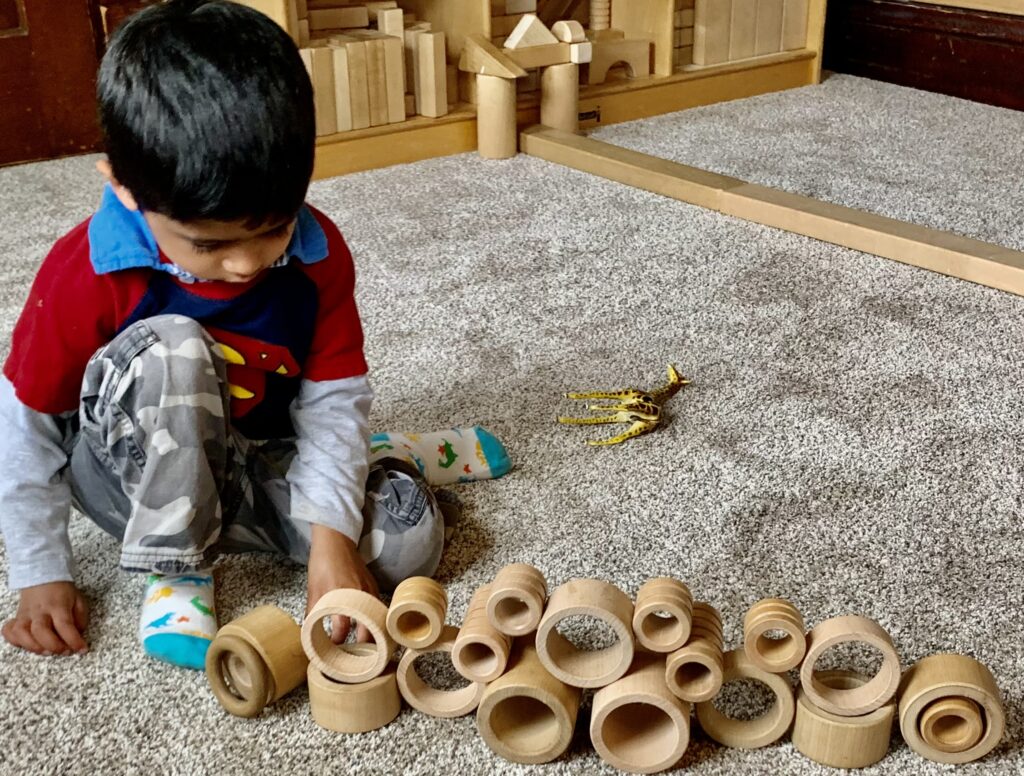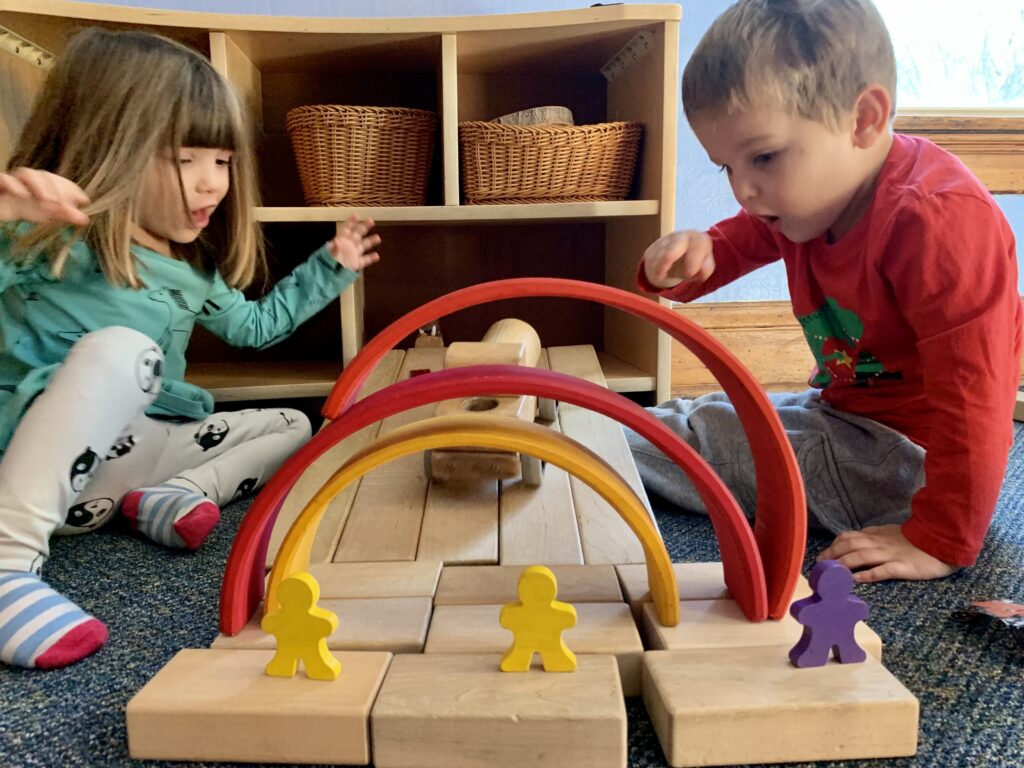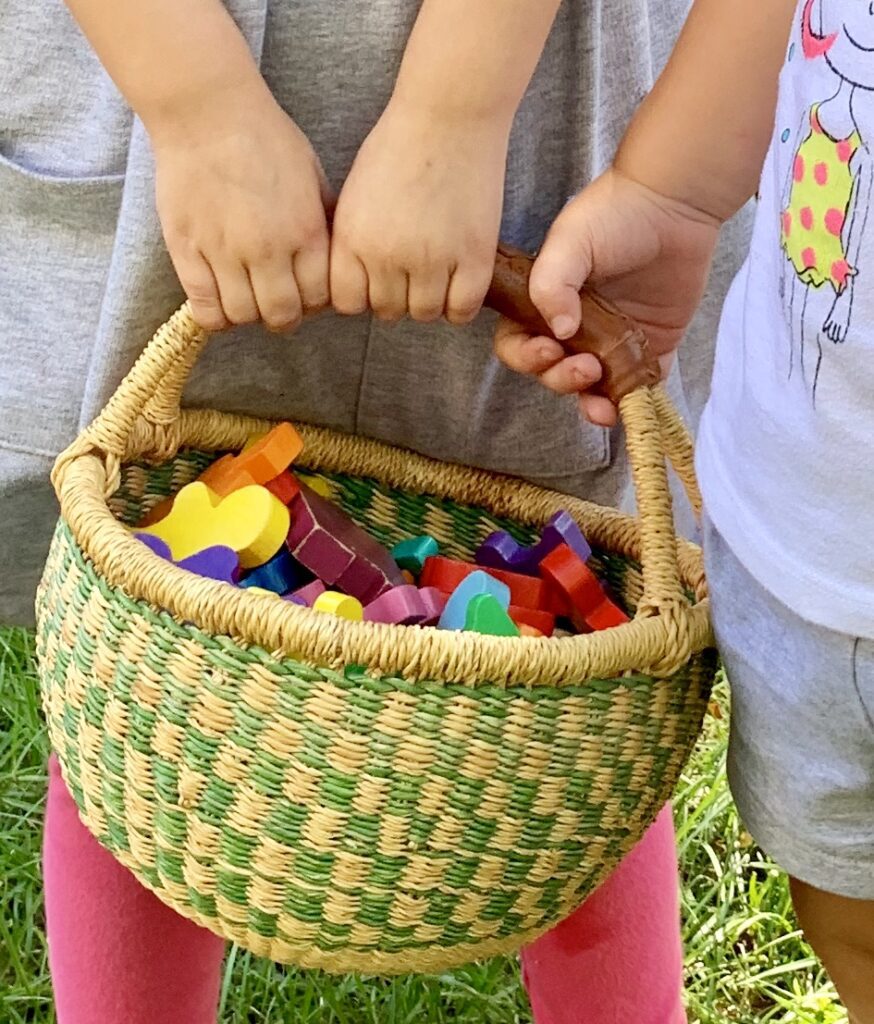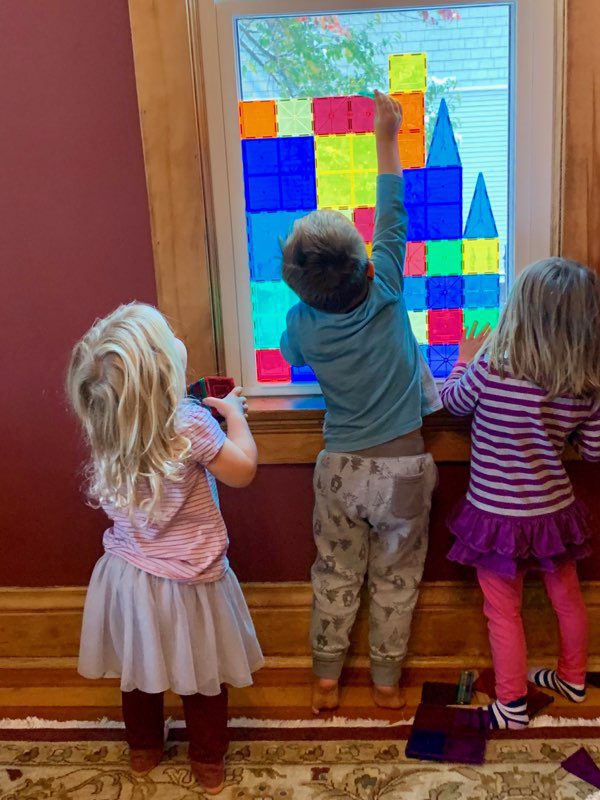Building Blocks for Developing Brains
You can’t teach creativity. But you help foster this important life skill by encouraging your child to explore new ideas and giving them ample time to engage in hands-on problem-solving.
Today, dark skies and a steady rain seem to have sapped the children's energy and contributed to a general state of fatigue in the classroom. Thankfully, the children have taken a deep dive into block play.
I love to witness the deep calm and concentration that accompanies block play. Block building follows the natural flow of a child's interests and curiosity. Children can rebuild a block structure again and again until they are satisfied with their creations.
Block play is also a critical "building block" for early brain development because it fosters creativity and critical thinking skills and involves measurement, spatial reasoning, comparison, estimation, symmetry, and balance.

Here's how to encourage block play at home:
- Designate a special space for block play. Choose a quiet space away from traffic flow and free of distractions to help your child focus on playing and building for unbroken stretches of time. Make sure your child has room to move around freely while designing and building the block structures.
- Equip your child's block play area with a bookshelf or cube system to organize the blocks by shape. When shapes are sorted and represented visually rather than piled up in a plastic bin, your child can access these different shapes more easily—and the visual display will encourage creative flow!
- Introduce your child to the block area and point out how the blocks are arranged.
- Ask a leading question to get your child's creative juices flowing: "Will you build a house for your dolls? Or a parking garage for your cars?"
- Once the block play is underway, use language prompts to encourage your child to engage in design thinking. Ask questions such as: "Will your house be tall or wide? Will it have a door? Will your parking garage have a ramp? What color blocks will you use?

An inviting block area will lead to hours of hands-on investigation and learning.
Make sure your designated block area is designed to facilitate creativity and experimentation. To add a new dimension to the play, add baskets of people figures or cars to the block area.
Remember that a child values ownership over a creative project. By respecting your child's block creation and the work that went into it, you are honoring your child.
Show that you value your child's creative output. Make sure there's space to leave your child's block structures up overnight—or even for days on end—to give your child the time he or she needs to problem-solve, pursue new ideas, and devise innovative solutions.
Photograph the block structures with your phone and fill a notebook with printouts of your child's block designs.

You can also create "block areas" in various parts of your home. I like to take Jenga or other types of blocks out of their boxes and place them in baskets in different rooms of the house.
Naturally, Magna-Tiles take up our biggest basket. Who doesn't love Magna-Tiles? I have to be honest, though. They turn our "budding engineers" into lazy builders because they rarely fall down, so sometimes I hide them!

A good set of basic wooden building blocks—minus the magnets—will encourage your child to engage in some structural problem-solving and engineering design.
A "building collapse" may initially lead to tears as the wooden blocks tumble down, but you can teach your child to persist and problem-solve with comments such as: "Wow! Now I see why you are such a good builder! You keep trying and building it over when they fall. Can I help you get it started again?"
Keep in mind, though, that block play takes time. Fifteen minutes isn’t going to cut it. Allow your child to design, build and problem-solve for extended periods of time. This high level of engagement and investigation will help lay the foundation for later learning in kindergarten and beyond.
So bring out the blocks and watch your child's brain development take off!